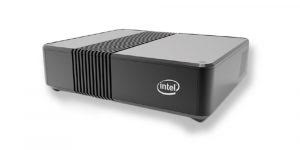With Intel’s Help, 5G Pushes Toward 2020 Deployment
To Help Meet Ambitious Targets, Intel Announces Its Intel 5G Mobile Trial Platform as First to Meet Upcoming NR Standard
By Asha Keddy
In the late 1990s when I joined Intel, I was amazed that my cell phone allowed me to make a call from almost anywhere. It freed me from my landline and changed how and when I communicated with friends and family, some of them around the world.
It’s hard not to look back on those days with a sense of naïve innocence. Things were much simpler. Less than 20 years later, we’re walking around with cloud-connected smartphones in our pockets that can tap into the equivalent performance of a supercomputer. And the pace of innovation is only accelerating with the advent of 5G – the next generation of wireless technology. We’re only now beginning to imagine a world of new uses that will further transform our lives for the better.
It’s astounding to see how fast the industry is moving forward today on 5G. As you read this, we are quickly approaching the initial milestone for the 5G new radio (NR), the wireless radio standard that will be the foundation of 5G, just like LTE was for 4G. In December, the 5G non-standalone new radio (NR) standard will be finalized with a goal to accelerate commercial 5G trials and deployments while the final standalone 5G NR standard is being developed. This is a major step forward for 5G, and the energizing and catalytic effect it will have on an array of technology and services.
To help the communications industry meet ambitious targets, Intel in September 2017 announces its Intel® 5G Mobile Trial Platform as the first to meet upcoming new radio standards.
The days of waiting 12 to 18 months for a silicon chip to test the latest set of specifications are long gone. Today’s talented researchers and engineers are in fast prototype mode. The foundation for much of their trials and development is the Intel® 5G Mobile Trial Platform (MTP). I’m pleased to announce today that our Intel 5G Mobile Trial Platform will begin to support the new non-standalone NR standard when available in the fourth quarter of this year for live tests and trials. It’s an industry first.
When the non-standalone NR specification is finalized, Intel will be ready to quickly begin work with the leading telecommunications equipment manufacturers (TEMs) to make sure the radio access network and the device side successfully operate within the initial NR standard. We’ll also join with operators to take non-standalone NR out of the lab and begin testing it in real-world situations. This heightened pace of development means we’ll be able to help the industry meet ambitious targets to deploy commercial 5G services before 2020.
To accelerate development times in 5G, the Intel® 5G Mobile Trial Platform is powered by high-performance Intel® FPGAs and Intel® Core™ processors. Now TEMs can test interoperability with devices sooner, operators can take the platform into real-world situations earlier, and standards bodies can collect data for final specs faster.
Since we announced the Intel® 5G Mobile Trial Platform at MWC in 2016, we’ve been collaborating with industry TEM leaders like Ericsson* and Nokia* and participating in trials with operators like AT&T*, Korea Telecom*, NTT Docomo* and Verizon*.
But we’re not done. We will continue to test and drive results and innovations into the full standalone 5G NR standard, which is expected at the end of 2018.
However, let’s remember that 5G is more than wireless. For it to become a reality, a network transformation is required to replace static, fixed-function equipment with a virtualized, software-defined network. Fortunately, it’s happening already. Leaders in the industry are expecting infrastructures to near more than 50 percent virtualized1 and realizing the benefits of lower total cost of operations and faster service innovation and deployment.
5G can happen only when the network, cloud and device come together into a powerful end-to-end 5G solution. That’s why Intel is unique in the industry for its ability to provide solutions for each of these areas.
Indeed, 5G implementation is not a sprint, it’s a marathon. It’s safe to say that years from now – when our cars drive themselves and our smart homes make our lives easier – we’ll look back with a sense of nostalgia at our smartphones and apps that were world-changing at the time. And no doubt another new technological innovation will then be racing at us.
—
Asha Keddy is vice president, Client and Internet of Things Businesses and Systems Architecture, and general manager, Next Generation and Standards, at Intel Corporation.
For the LATEST tech updates,
FOLLOW us on our Twitter
LIKE us on our FaceBook
SUBSCRIBE to us on our YouTube Channel!






